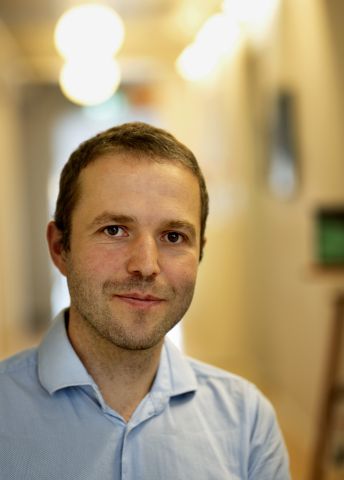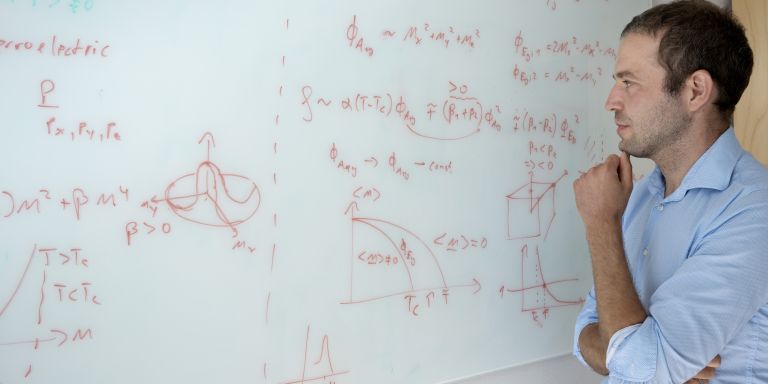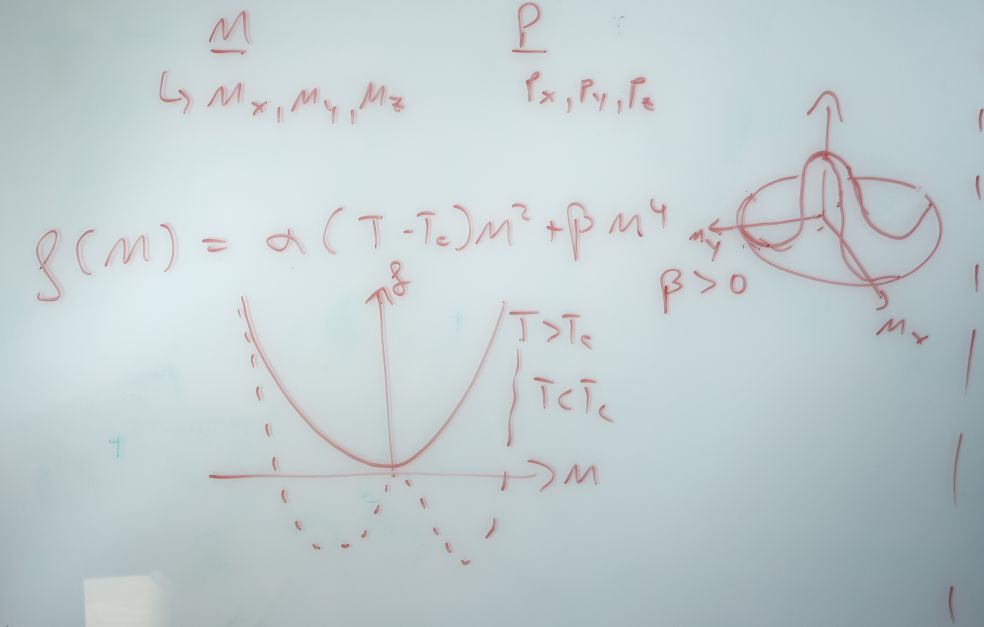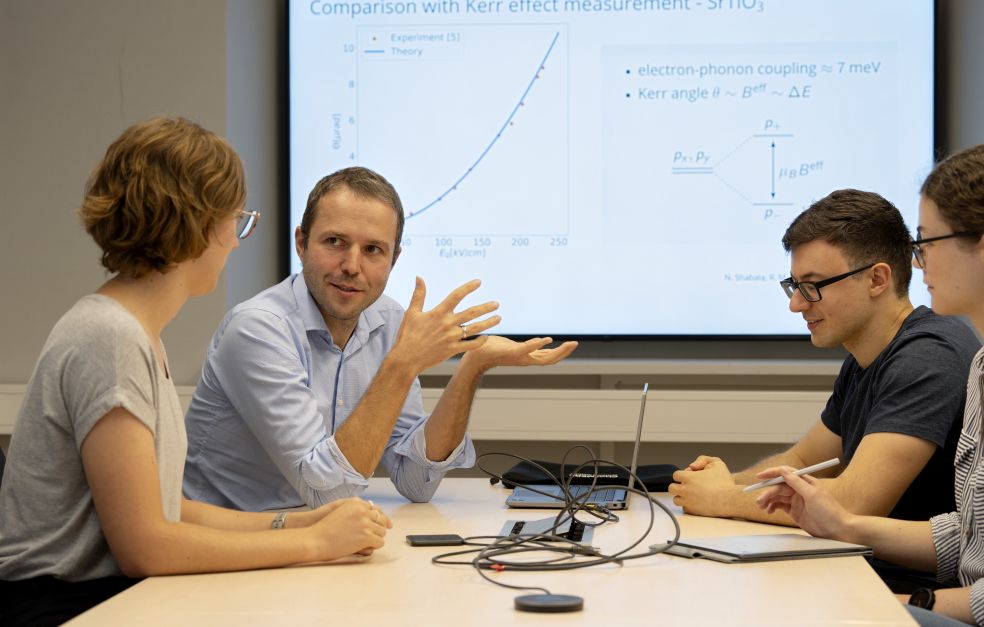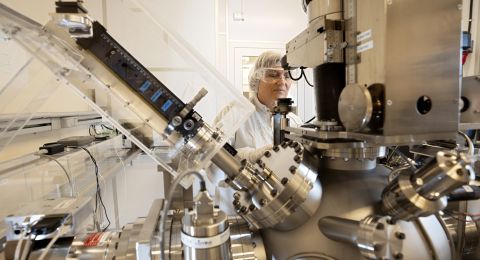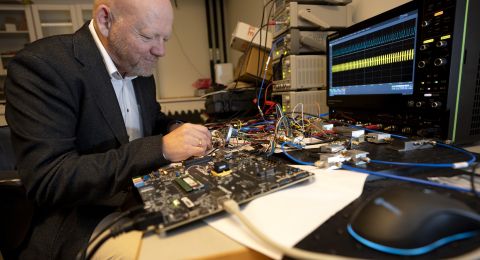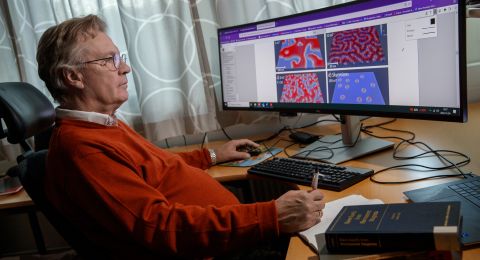Powerful forces are at work in the microscopic world of quantum physics. Matthias Geilhufe is examining how ultrafast and superstrong magnetization can occur in materials. This is knowledge that may pave the way for technologies of the future, e.g. more energy-efficient computers.
Matthias Geilhufe
Assistant Professor, Condensed Matter and Materials Theory
Wallenberg Academy Fellow 2023
Institution:
Chalmers University of Technology
Research field:
Condensed matter and materials theory
It seems that more or less anything can happen in the strange world of quantum physics. In this microcosm, from atomic scale and downwards, quite different laws apply, giving researchers exciting opportunities to explain how everything fits together in our world.
Geilhufe, who is a theoretical physicist and Wallenberg Academy Fellow, has devoted his life as a researcher to exploring, understanding and describing quantum phenomena. Over the next few years he will be getting to grips with a fairly recently discovered phenomenon: that materials can acquire strongly magnetic properties under certain conditions.
“Our research team was among the first to work on the theories concerning this powerful effect. Now our goal is to put forward a theoretical explanation of how this strong magnetization occurs and works, and how it can be used in technologies of the future,” he says.
Atoms interacting with electrons
To understand the mechanisms underlying magnetism, the researchers are focusing on atoms and their interaction with electrons orbiting their nucleus. Atoms are never still, and the researchers can use laser to change how they move and thereby how they interact with the surrounding electrons.
“Thanks to developments in laser technology, it’s now possible to induce atoms to move in a given way over a very short time scale in order to manipulate certain properties of a material. We’re particularly interested in how atoms moving in circles interact with electron spin – a quantum mechanical property and a rotation pattern of electrons that drives magnetism,” Geilhufe explains.
Atoms moving in circles generate weak magnetism; it appears that the really powerful effect occurs in interaction with electron spin – up to 10,000 times greater magnetism than without the interaction.
“That’s why it’s important to include electrons when explaining how this strong magnetism occurs,” he says.
He stresses that a key task for a theoretical physicist is to show how theories can be tested.
Our goal is to put forward a theoretical explanation of how this strong magnetization occurs and works, and how it can be used in technologies of the future.
“We need to answer questions like: what methods are best to measure this effect? How does it occur? What frequency should the laser have? When we fully understand and can describe all this, that knowledge will have wider applications. This is how technologies are built,” says Geilhufe.
Paving the way for more energy-efficient computers
Adding to our knowledge of how strong magnetism occurs and can be used may have implications in multiple fields. A prime example is spintronics, where strenuous efforts are being made to create energy-efficient computers.
“Magnetism is a vital part of data storage. At present most digital information is stored on magnetic media. If we can develop effective ways of inducing strong magnetism over ultrashort time scales, there will be great potential for using this in the rapid and efficient data and communication technologies of the future,” he says.
A central goal in spintronics is to reduce resistance in materials, since resistance hinders the flow of electrons, wasting energy in the process. This is another field in which more knowledge about magnetic materials could open new doors.
“At present, large quantities of excess energy are lost in the form of heat from our mobile phones and computers. Much would be gained if that energy could instead be used to drive computations,” Geilhufe comments.
The fascinating generality of nature
Geilhufe’s interest in science and mathematics began at an early age. Even as a young boy he knew he wanted to be a researcher. His father is a chemist, so science and scientific phenomena were often discussed at home. After a time he found the perfect combination of mathematics and science – physics. It was a subject that spurred his curiosity about how things fit together.
“I’m driven by a desire to understand new things, and to find out how everything fits together. I’m ever more fascinated by the patterns that exist in physics, and how they can be used in so many fields. Nature is permeated by a generality that is incredibly exciting,” he says.
Geilhufe points out that scientific advances make it increasingly essential to collaborate, something he enjoys.
“Scientific research is difficult to do alone – it requires a range of knowledge and skills. I very much enjoy interacting with colleagues and research partners, and since my field is an international one, it’s also fun to work with people from many different countries,” he says.
He thinks being chosen for the Wallenberg Academy Fellow scheme is a privilege on several levels.
“The grant itself provides absolutely vital funding for this research, enabling us to address the really big research questions. But it’s also fantastic to be part of the Wallenberg Foundations’ network, and meet other researchers establishing their own teams. It’s a great privilege,” says Geilhufe.
Text Ulrika Ernström
Translation Maxwell Arding
Photo Johan Wingborg
